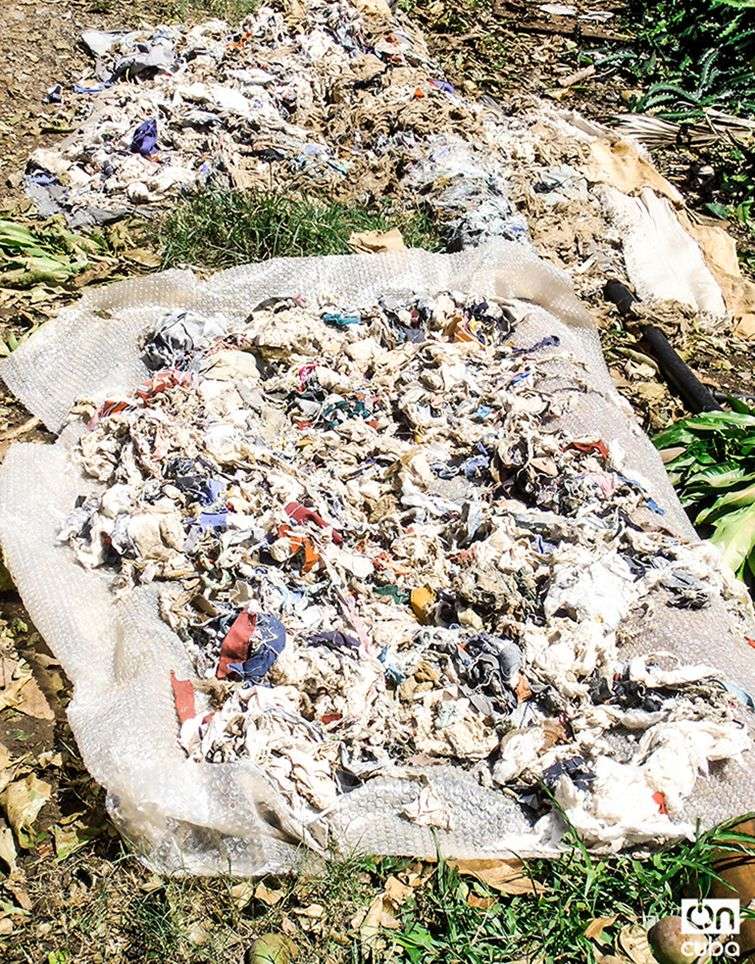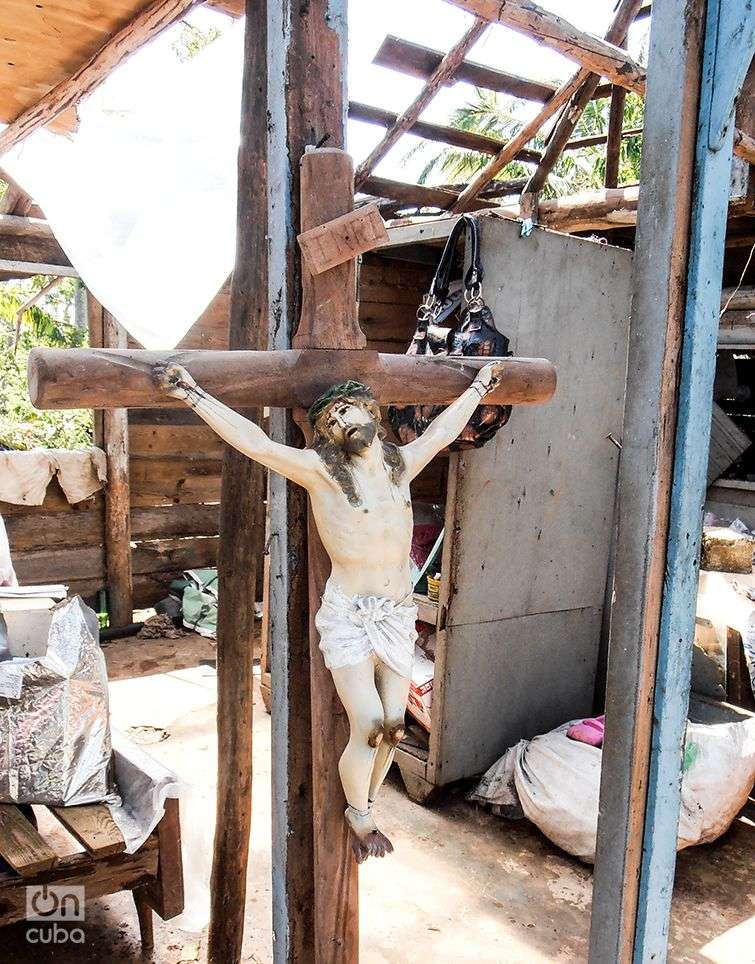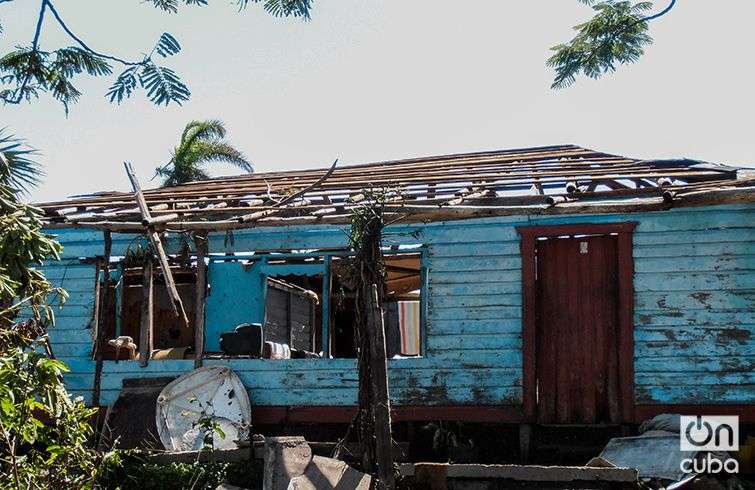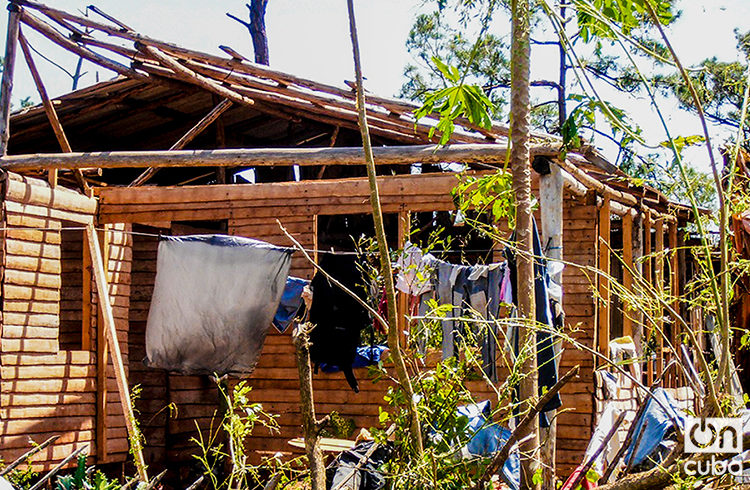“Everybody lost something here,” a moved mother sententiously says. “I myself was left with nothing to put on my daughter, because my home was in a very bad state and everything got wet. The majority of the women were evacuated in Quemado del Negro, a small town nearby, and when I got here and saw that I had lost everything, I could only cry. What am I going to do now, with this month-old baby, to fix my home? What am I going to put on her when the cold weather gets here?”
Yamanigüey, the last point of Holguín’s geography, is located 30 kilometers from Baracoa. It borders on the east with Guantánamo, which is why it is located very close to the point where Hurricane Matthew left Cuban soil. There they also felt all its power for almost 10 hours.
Getting to Yamanigüey implies following a winding highway that stops being paved only some meters further ahead of the Comandante Ernesto Che Guevara Nickel Company, in the city of Moa.
Its population does not exceed 1,500 inhabitants and, as happens in small towns, everything is known and they are joined by family ties. That’s why it was not surprising that in the face of the arrival of Matthew the people got organized and those with better houses sheltered those who already knew beforehand that they were going to lose their homes.
Four days after the hurricane, when the roads were passable and one could reach Yamanigüey, the panorama there was also terrible.

“The strong wind gusts and the rain started at 6 in the evening, and it was like that until 4 in the morning, when it started to ease up,” recalls Ismaela Matos, owner of one of the houses that sheltered 10 persons, between neighbors and relatives. “It seemed as if the world was coming to an end. We had never seen the likes of it. I took a peek through a small crack and it was painful to see how the roofs flew and the avocado and banana trees were uprooted,” she remembers.
The town’s pharmacy, school, grocery store were destroyed. When I collected these testimonies the exact amount of totally destroyed houses was still unknown as well as of those that were still standings, without roofs and with less walls.
The electricity cables on the floor made it known that the power would perhaps take weeks to be reestablished and that the pots and cooking ranges would not be used for a long time.
From the nearby Moa, the government has sent free food, which does not make up for the population’s needs. Eggs and soup are sold there, but they are sold out so fast that the neighbors from other also affected places, like Cañete or Cupey, cannot buy them.
Cañete
Approximately some 200 families who have lost almost everything live in Cañete. Practically 80 percent of the houses were totally or partially destroyed. The fruit and root vegetable crops, the principal source of food and commerce of the townspeople, were totally devastated. The same occurred with the domestic animals.
Juana says that in the 38 years she has been living there she had never seen something like it. “No one has come here to see how we are. We heard that on TV they were saying that nothing had happened in Holguín and of course they had to say that if no one came here. When we saw the helicopter taking photos and filming images we waited for someone to come and we’re still waiting. I lost my animals, but here there are people who lived from what they planted and who lost everything, even their home. We don’t have drinking water because we’ve been waiting for years for a solution to the water that arrives through the pipes and comes green and smelling like a dead fish. We use rainwater to drink, but we weren’t able to collect the rain that came with the hurricane. We use the only oxen-drawn cart we have to go to Yamanigüey to get water to cook and for the rest of the house,” she says.

Another woman from the town, Melisa, joins in: “My house was made half from boards and half from rubber. The wind split the rubber and it entered through there and left me with nothing more than the standing walls made of boards. My two children’s textbooks and beds got wet.”
Melisa stops talking because her sobs don’t let her breath. When she recovers her words they are like a sigh. Ramón interrupts her: “Look here, journalist, we were already living badly here before the hurricane, but now we are worse off. We don’t have food, the houses are almost all destroyed and they tell us that for the time being they can’t help us much, because Baracoa has been destroyed. And what are we going to do? I’m an old 63-year-old man who only had my hut and my animals. And now I have nothing.”
Cupey
Just 2 kilometers from Cañete and Yamanigüey, silently lying between the sea and brush land, is the small town of Caney. Its inhabitants fundamentally are fishers and a few work in the Comandante Ernesto Che Guevara Nickel Company. The panorama there is very similar to what is seen and heard in the entire zone.
The pain came hand in hand with Matthew to the home of Maria Julia, one of the town’s last. But it was not the first time that it happened to her. The 68-year-old woman, suffering from diabetes and with no other company than a cat, dries her tears with a cloth while she shows what was left of her house.
Hurricane Ike in 2008 had already showed how ferocious nature can be when it is joined by the sea and the wind. “My house completely collapsed and I did not get any answer. On February 15, 2015 I got the subsidy to fix it because of Ike, but Sandy also tore off the roof. Now the materials I had bought are wet and I no longer have the strength to do so much running around for the paperwork, my dear,” she tells me surrounded by rubble.
A crucifix hangs on the wall and Juana kisses its feet while crying, looking at the little that is left of her home.
The names of Yamanigüey, Cañete and Cupey were not in the news. Neither were the stories of Ismaela, Juana or Ramón. Their protagonists know that life mush continue and they know that this only depends on them.











